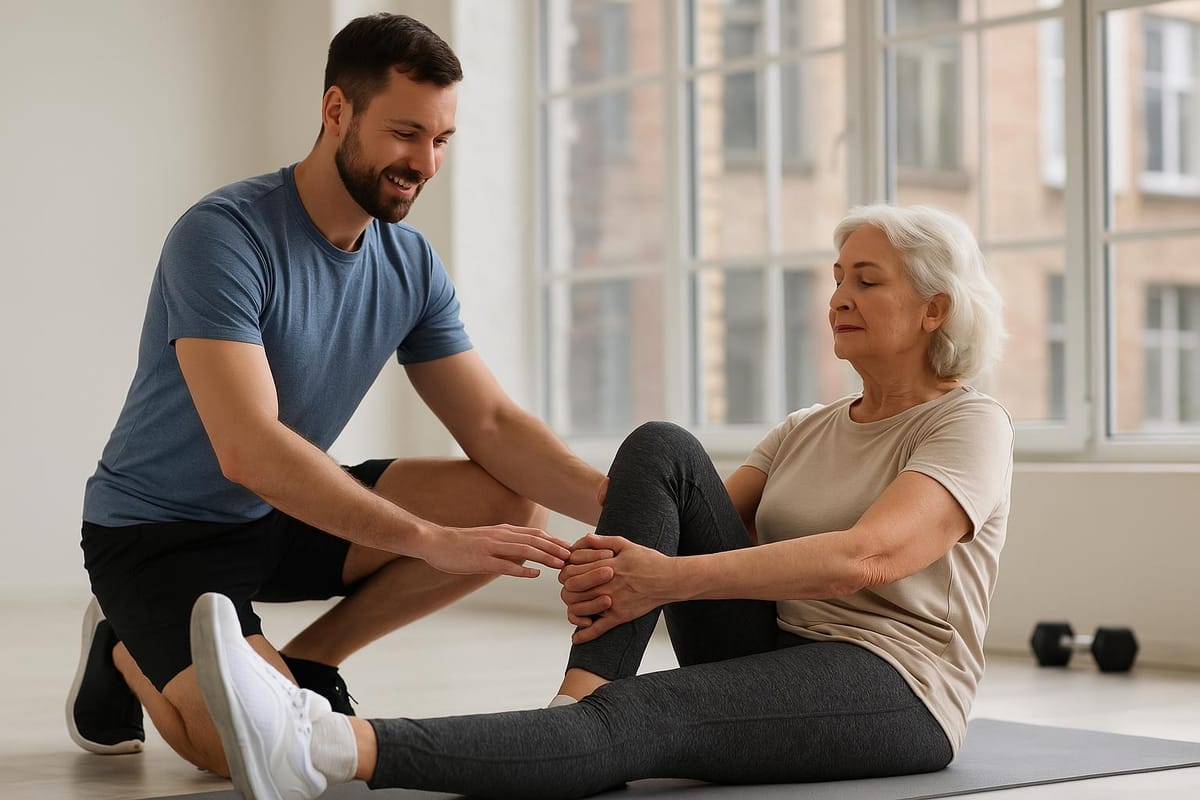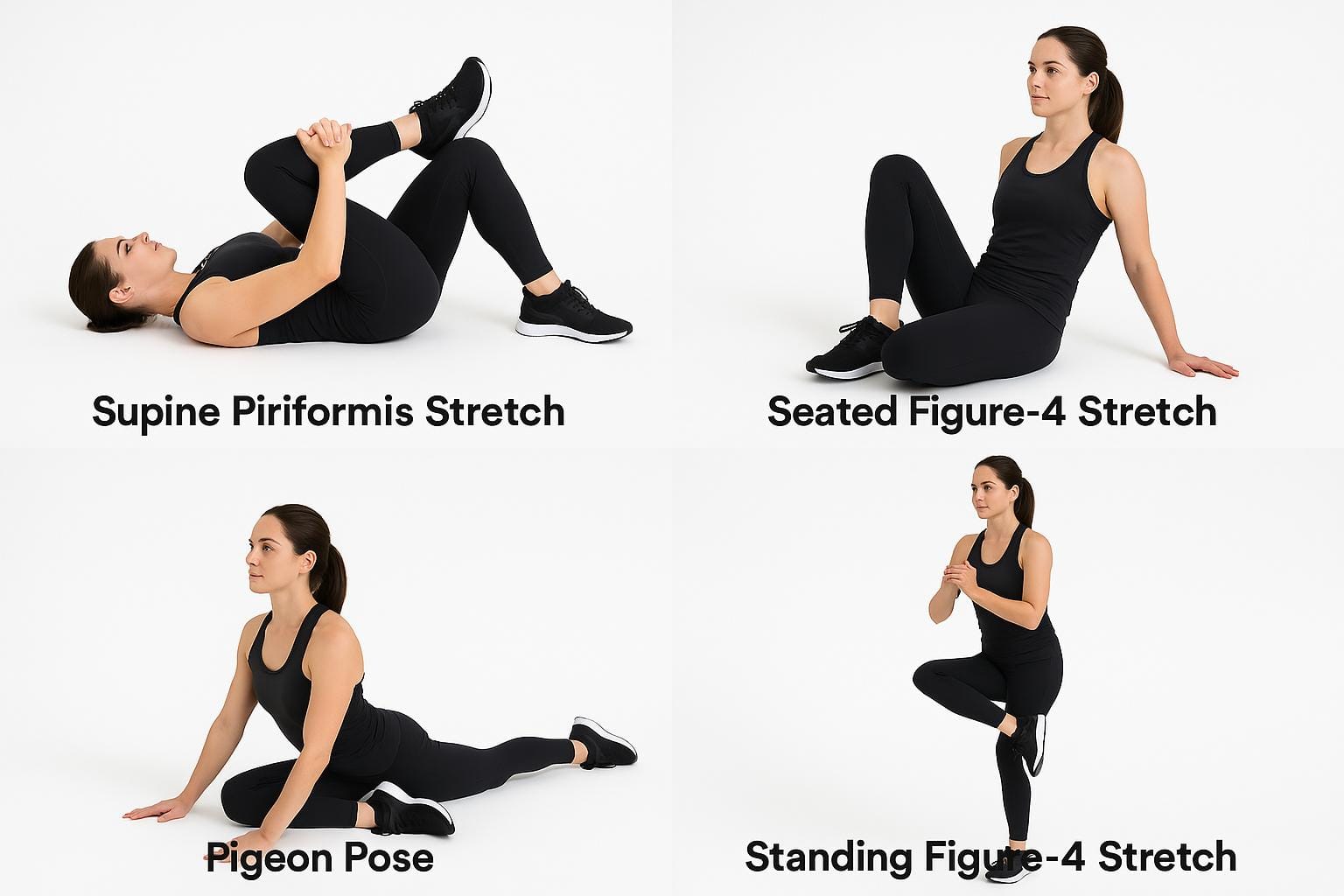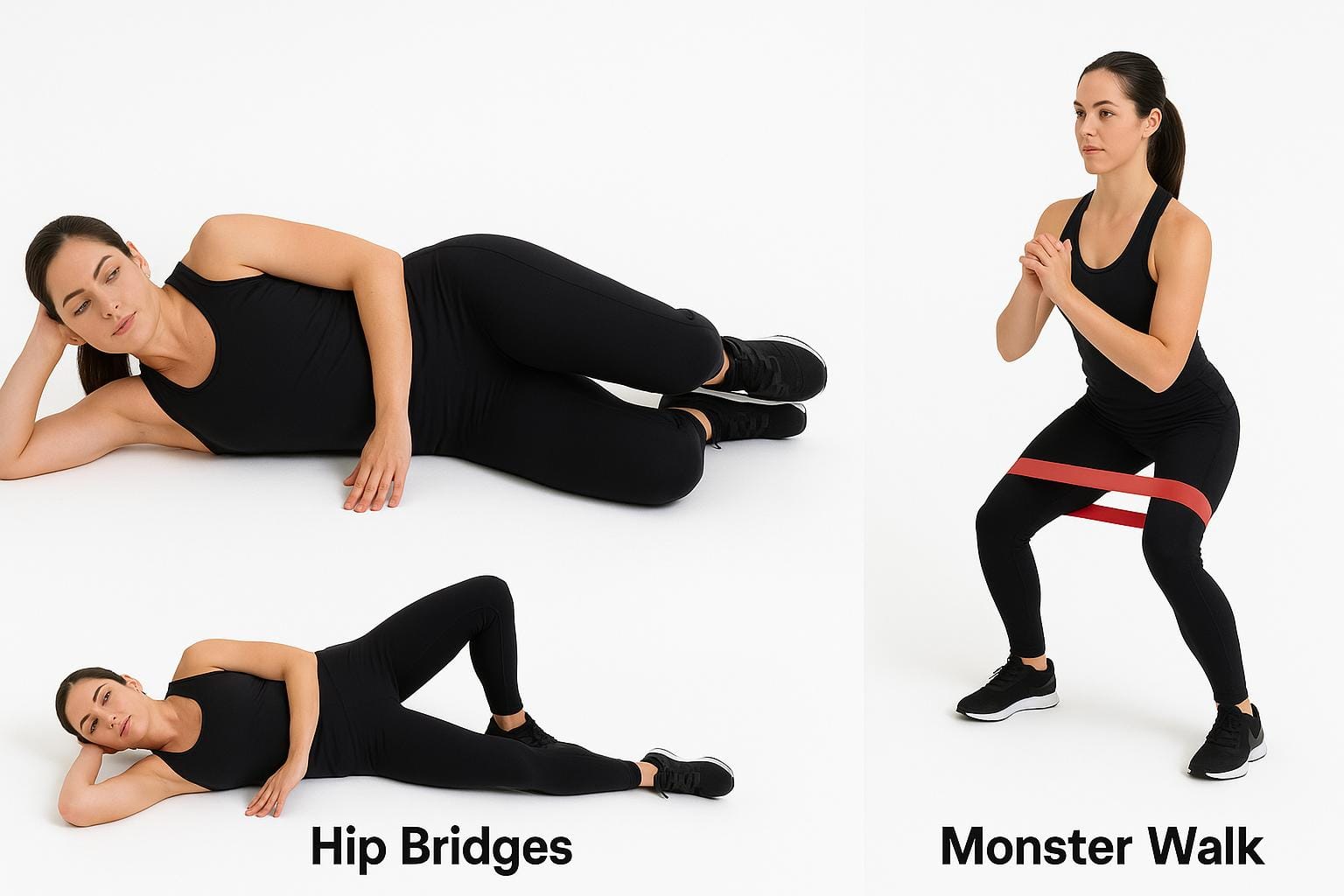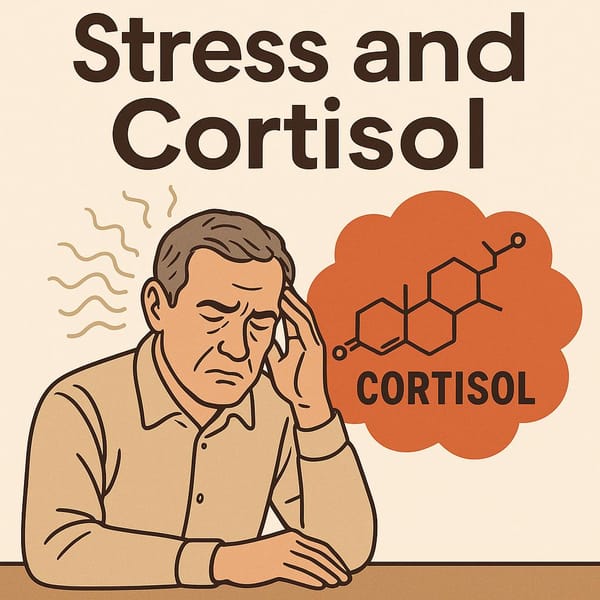Deep 6 Muscle Stretches for 50+: Tips for Sustainable Mobility
Learn how to properly stretch the Deep 6 (Piriformis) muscle group to enhance mobility, reduce pain, and promote health in your 50s and beyond.

Introduction
Many people might have heard of the “Deep 6” muscle group, also known as the deep external rotators of the hip. These are small muscles located deep in the hip area, responsible for controlling the rotation of the hip joint and helping stabilize the body. If these muscles become tight or weak, one may experience pain or tightness around the hip or lower back, potentially affecting everyday movements.
This article delves into the details of these Deep 6 muscles, how to warm up and stretch them correctly, and the precautions you need to take, especially if you’re over 50. Proper care of these muscles can help maintain your mobility and reduce discomfort in your daily life.
Understanding the Deep 6 Muscle Group
Deep 6 refers to the six deep muscles in the hip:
- Piriformis
- Gemellus Superior
- Obturator Internus
- Gemellus Inferior
- Obturator Externus
- Quadratus Femoris
These muscles primarily control external rotation of the hip joint. When they’re strong and flexible, your daily activities—such as walking, squatting, or standing up—become easier and safer.
Why Taking Care of the Deep 6 Matters
- Reduces Lower Back Pain: Tightness in the deep hip muscles can pull the lower spine out of alignment and potentially compress nerves, leading to lower back pain.
- Improves Balance and Mobility: Flexible hip muscles help maintain balance, an essential factor for preventing falls in seniors.
- Enhances Exercise Performance: Strong and balanced Deep 6 muscles can improve overall exercise efficiency and decrease the chance of injury.
- Prevents Piriformis Syndrome: When the Piriformis is overly tight, it may press on the sciatic nerve, causing radiating pain down the leg.
Preparation before Stretching the Deep 6
- Warm-up: Light activities like walking for 5–10 minutes or using a foam roller on your hips and lower back can increase blood flow and loosen tight tissues.
- Check Your Condition: If you have any existing injuries or inflammation, consult a doctor or physical therapist before attempting these stretches.
- Set Your Environment: Choose a safe, non-slippery surface (e.g., a yoga mat or soft carpet).
- Be Consistent: Aim to stretch at least 3–5 times per week for long-term benefits.

Stretching Techniques for the Deep 6 Muscles
1. Supine Piriformis Stretch
- How to Do It:
- Lie on your back with knees bent.
- Cross your right ankle over the left knee, forming a figure-4.
- Thread both hands under the left thigh, gently pulling the knee toward your chest.
- Hold for 20–30 seconds, then switch sides.
- Caution: Ease up if you feel sharp pain.
- Benefits: Helps release tension in the Piriformis and the deep hip area.
2. Seated Figure-4 Stretch
- How to Do It:
- Sit upright on a sturdy chair with feet flat on the floor.
- Cross the right ankle over the left knee, again forming a figure-4.
- Gently lean forward until you feel a stretch in your right hip.
- Hold for 20–30 seconds, then switch sides.
- Caution: Keep your back straight and avoid excessive bending.
- Benefits: Ideal for those who have difficulty getting on or off the floor.
3. Pigeon Pose (Basic)
- How to Do It:
- Start on all fours (tabletop position).
- Bring your right knee forward between your hands, left leg extended behind you.
- Slowly lower your upper body until you feel a stretch in your right hip.
- Hold for 20–30 seconds, then switch sides.
- Caution: Use a cushion or modify if you experience knee pain.
- Benefits: Stretches multiple muscles in the Deep 6 simultaneously while improving balance.
4. Standing Figure-4 Stretch
- How to Do It:
- Stand upright, using a chair or wall for support.
- Cross your right ankle over the left thigh (just above the knee).
- Slowly squat down a bit, feeling the stretch in your right hip.
- Hold for 20–30 seconds, then switch sides.
- Caution: Use support to avoid losing balance.
- Benefits: Improves balance while stretching the hip.

Strengthening Exercises for the Deep 6
- Clamshell
- Lie on your side with knees bent at about 90 degrees.
- Keep feet together as you lift the top knee up, like opening a clamshell.
- Do 10–15 reps for 2–3 sets.
- Benefits: Targets the deep hip stabilizers and side hip muscles.
- Hip Bridges
- Lie on your back with knees bent, arms at your sides.
- Lift your hips until your body forms a straight line from shoulders to knees.
- Hold 3–5 seconds, then lower.
- Do 10–15 reps for 2–3 sets.
- Benefits: Strengthens the glutes and hamstrings, alleviating lower back tension.
- Monster Walk (with Resistance Band)
- Loop a resistance band around your knees or ankles.
- Slightly bend your knees, keeping your back straight.
- Step sideways like a “monster,” maintaining tension in the band.
- Perform 10–15 steps forward/backward.
- Benefits: Strengthens the deep hip muscles and improves hip/knee stability.
Recovery from Muscle Strain or Inflammation
- Rest and Ice: If you experience sudden inflammation or pain, take a break and apply ice for 15–20 minutes, 2–3 times a day.
- Consult a Physical Therapist: If symptoms persist for more than 1–2 weeks, seek professional advice.
- Use Self-Massage Tools: Foam rollers or massage balls can help release tight spots in the hip region.
- Avoid Prolonged Sitting: Stand up or walk every 30–60 minutes to reduce continuous pressure on the hip muscles.
Precautions and Additional Tips
- Start Gently: Don’t overstretch or exert too much pressure in your first sessions, especially if you’re 50+.
- Listen to Your Body: If you feel sharp or acute pain, stop immediately and consult a healthcare professional.
- Breathe: Deep, controlled breathing can help reduce tension during stretches.
- Be Consistent: Regular, moderate stretching yields better long-term results than sporadic, intense sessions.
- Know Your Limitations: Individuals with existing lower back or hip conditions should consult a doctor before beginning these exercises.
Conclusion
Taking care of your Deep 6 muscles isn’t overly complicated, but it does require consistency and the right knowledge. This is particularly true for those 50 and older, who may be more prone to injuries. Stretching properly and incorporating strength exercises into your routine can help reduce pain, improve movement, and enhance your overall quality of life.
Always assess your physical condition and consult a doctor if you notice anything unusual before starting a new workout program. Aim for gradual progress to allow your body to adapt safely. By combining the correct stretching and strengthening exercises with balanced nutrition and adequate rest, you can move confidently and enjoy your day-to-day activities without being restricted by discomfort.
Disclaimer: This article provides general information and does not substitute professional medical advice. If you have any doubts or unusual symptoms, seek guidance from a healthcare professional.



